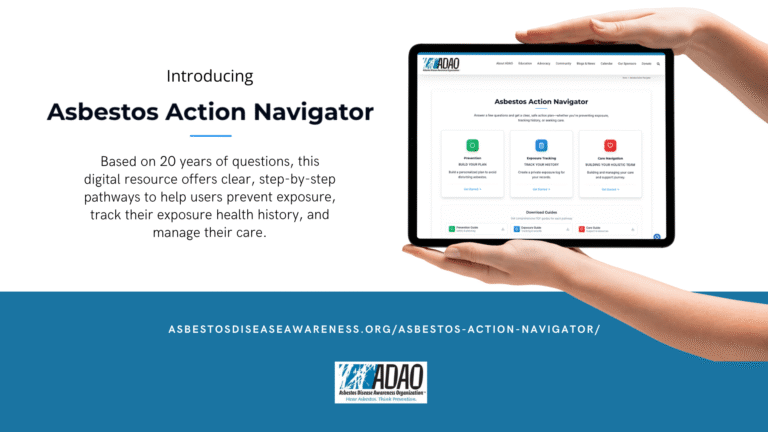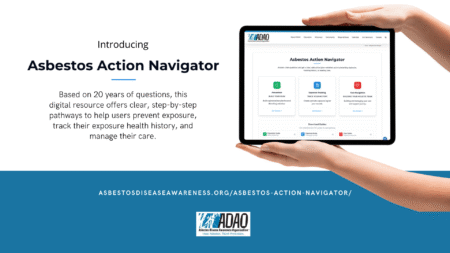Posted on January 30, 2021
February is World Cancer Prevention Month, and ADAO is proud to reaffirm our commitment to helping prevent asbestos-caused cancer.
This year marks the 50th Anniversary of the signing of the National Cancer Act, which expanded funding for cancer research and programs. Now, as we wrap up the first month of 2021, we are focused on hope. Thanks to the work of researchers and healthcare professionals across the nation, we have more reason to be hopeful as 2021 rolls on. National Cancer Prevention month is a great opportunity to join the online conversation about cancer prevention by using the hashtags #WeCanICan and #WorldCancerDay. 
According to the Annual Report to the Nation on the Status of Cancer (March 12, 2020) the “cancer death rates decreased 1.5% on average per year from 2001 to 2017.” The decrease is likely due to advances in research, according to the report. For the first time, the report also provided rates and trends for the most common cancers among people younger than 15 years, as well as people between the ages of 15-39. Among those less than 15 years old, overall cancer incidence rates increased an average of 0.8% per year during 2012 to 2016.
In 2020, there were 1,898,160 new cancer cases and 608,570 cancer deaths are projected to occur in the United States. But there are prevention methods that could be utilized to hopefully lessen these numbers. Physicians need to have more conversations with their patients to talk about early warning symptoms of cancer, but also about how to prevent high risk exposures. People can be exposed to asbestos through consumer goods (asbestos has been found in children’s toys and makeup products), occupational hazards, and in the environment. But they can also be exposed through home repairs or during a natural disaster. If physicians and medical personnel had these conversations more frequently with their patients, people might be able to risk exposure to asbestos.

This report underscores the importance of preventative action in the fight against cancer, as prevention remains the only cure for asbestos-related lung cancer, mesothelioma, and other asbestos-caused diseases. Unfortunately, despite a century’s worth of scientific data condemning it as carcinogenic, asbestos remains legal and lethal in the U.S. and continues to contribute to an annual mortality rate of almost 40,000 preventable American deaths.
Through education, advocacy and community building, ADAO has worked diligently to raise awareness about the dangers of asbestos exposure. Together with stakeholders, we took landmark steps with the bicameral Alan Reinstein Ban Asbestos Now Act (ARBAN) to end imports & use, study legacy asbestos, and improve chemical reporting. ARBAN Congressional Champions remain committed to introducing a 2021 ARBAN to reach our shared goals.
I am honored to present at Less Cancer’s National Cancer Prevention Day Workshop on February 4th which will bring together the nation’s brightest scientific and political minds in the movement to prevent cancer. If you’d like to participate more directly, please Join us online for the streaming workshop.
Stay tuned for educational updates throughout this critical month of advocacy!
Together, we can end asbestos-caused cancers.
In unity,
Linda Reinstein
Social Networks


